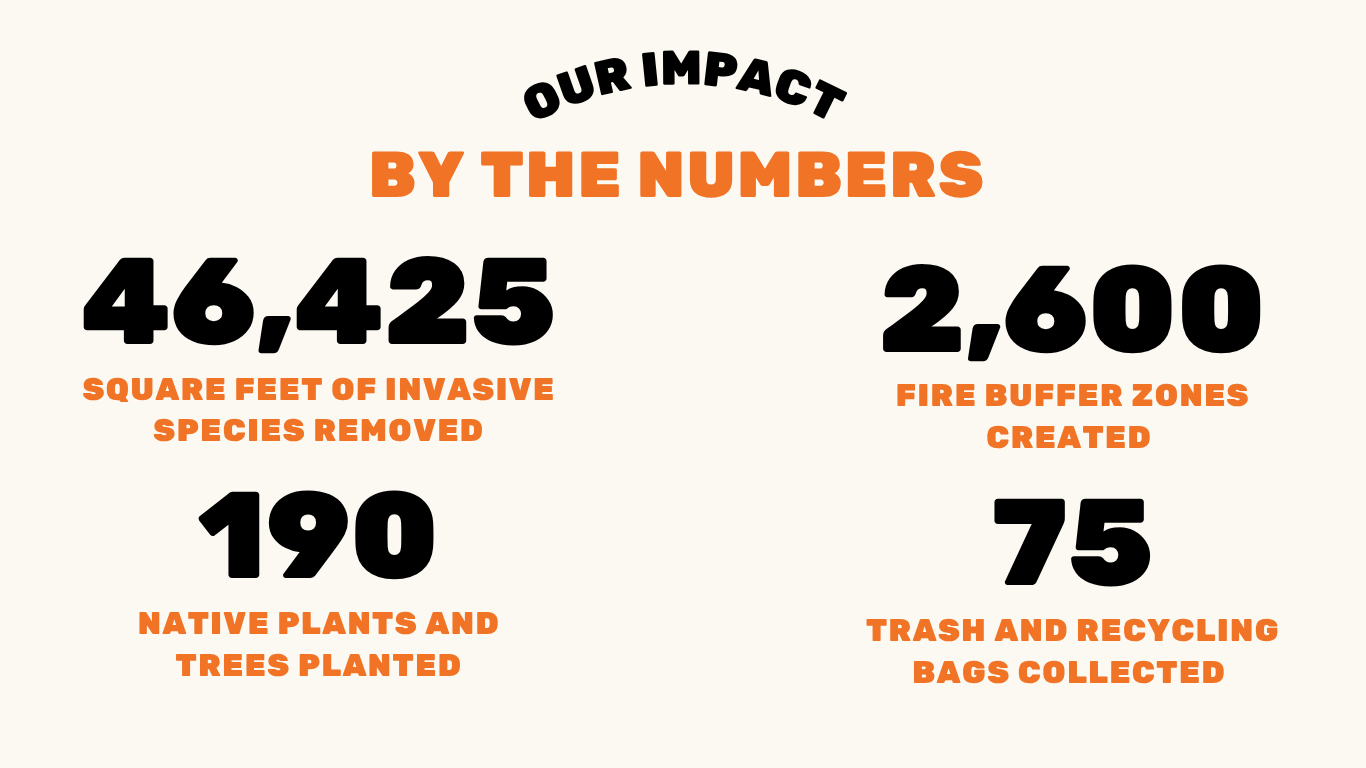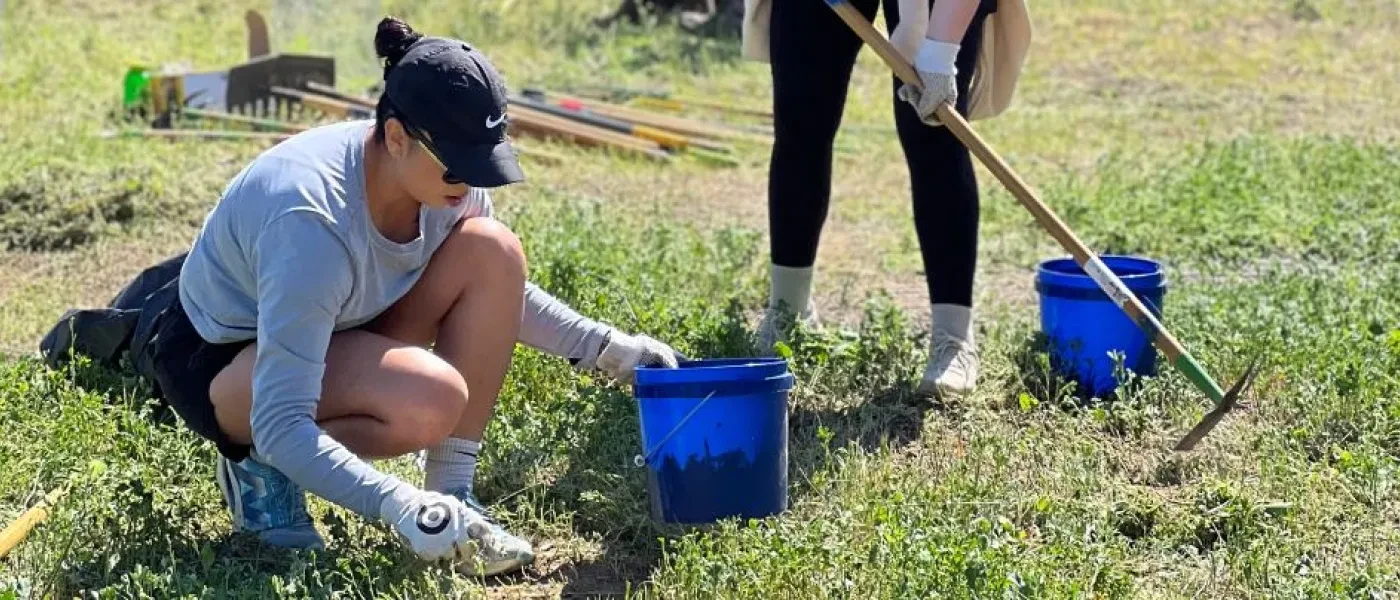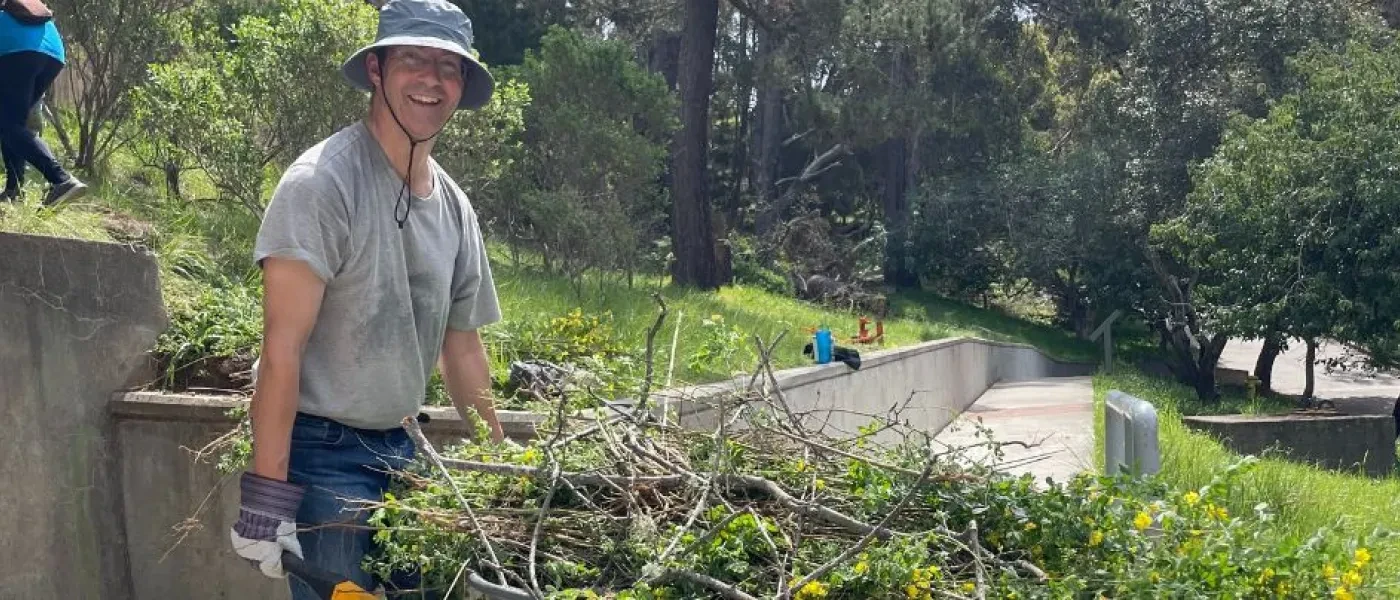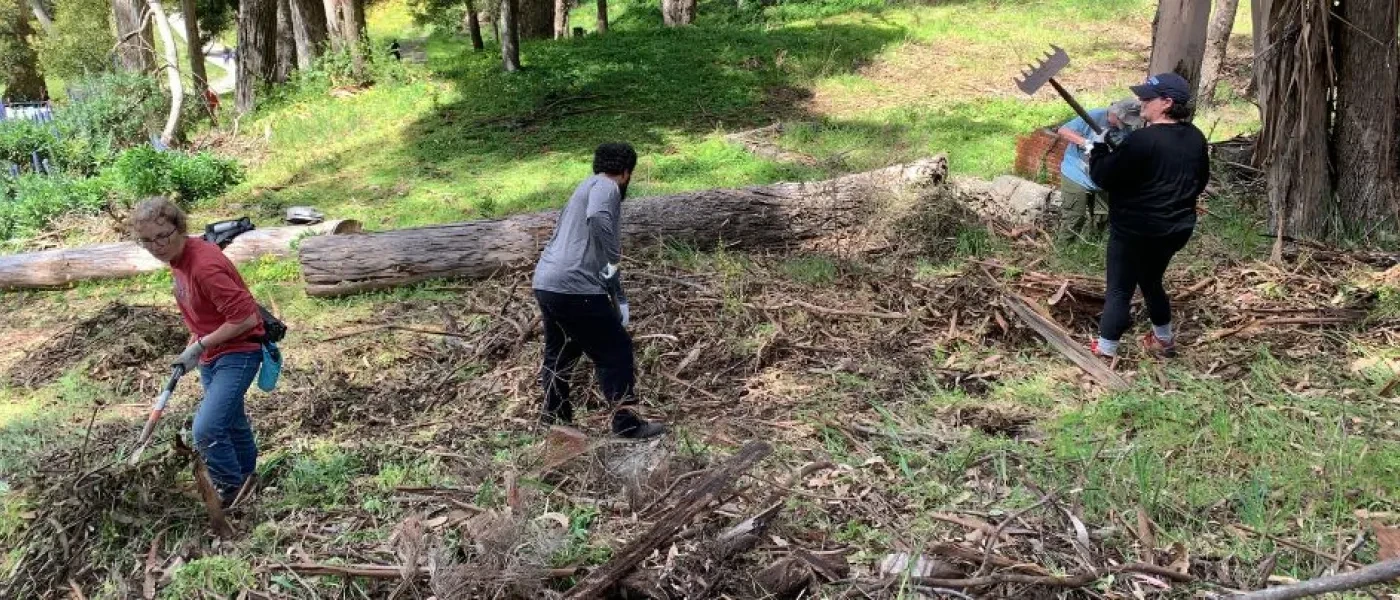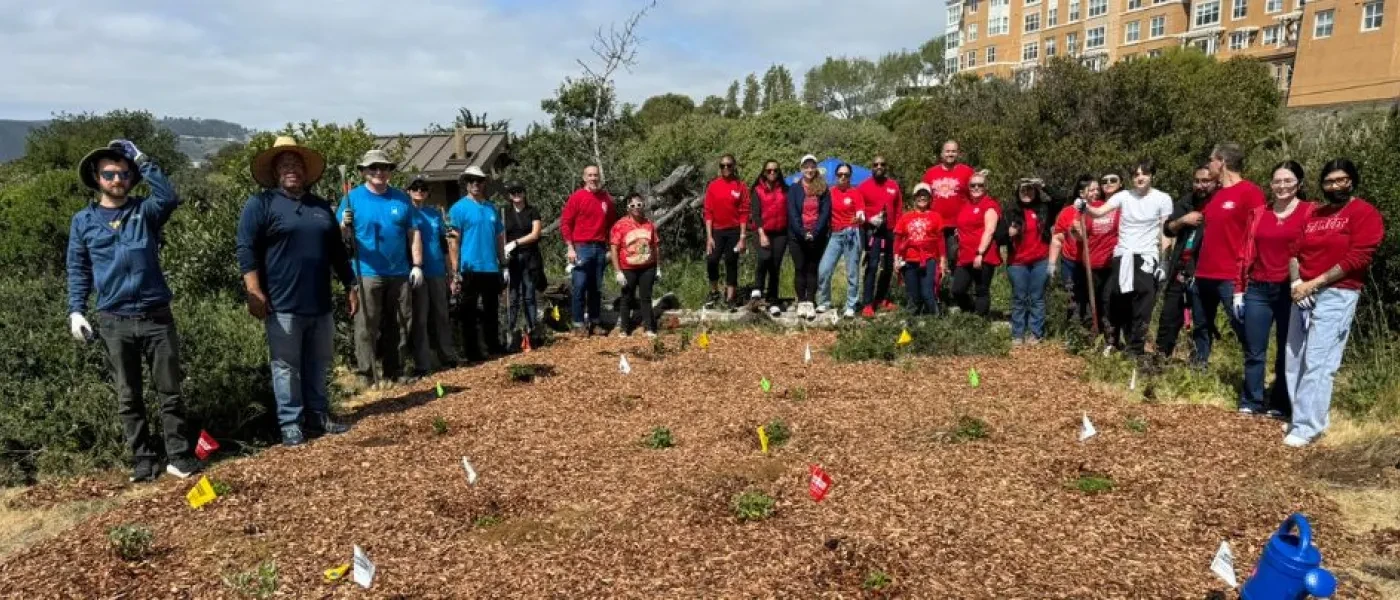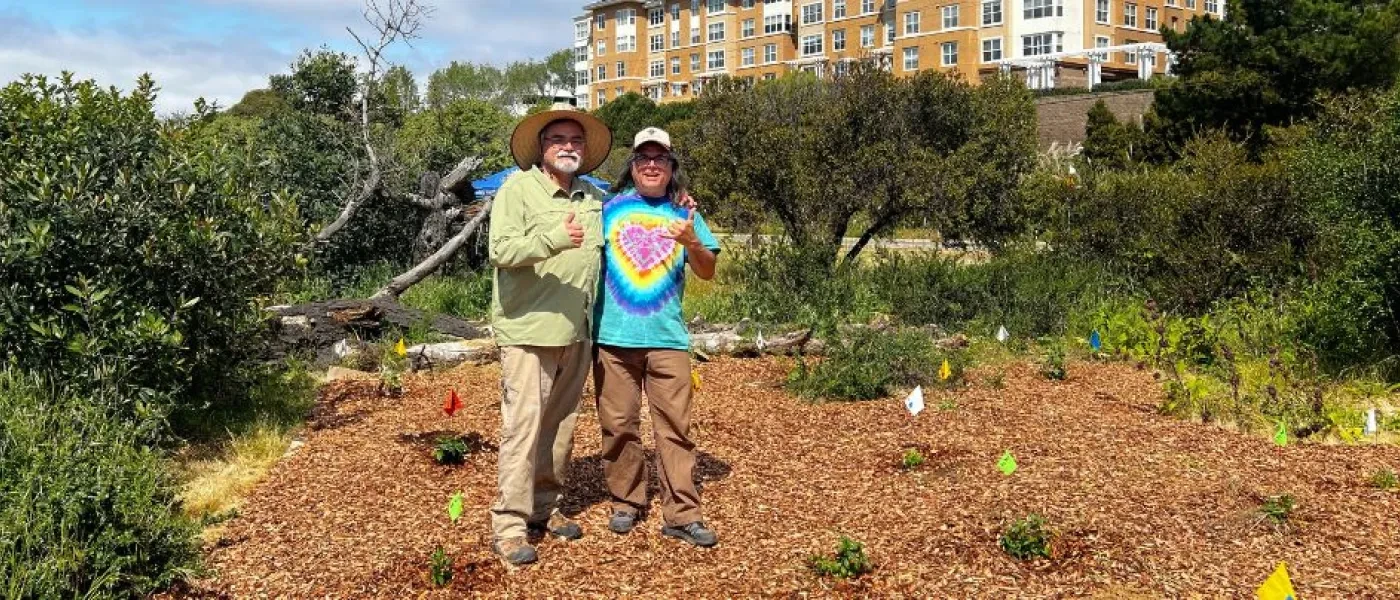Throughout April, California State Parks Foundation continued our 25+ year tradition of celebrating Earth Day Climate Action with a month of hands-on climate action events. A total of 687 volunteers from across the state joined together to restore native habitats, support wildfire resilience, maintain trails, and expand ongoing restoration work. Here’s a look at the many ways our community of volunteers came together to take meaningful action.
Stopping the Spread of Black Mustard and Invasive Species
At Baldwin Hills Scenic Overlook, Chino Hills State Park, and Auburn State Recreation Area, volunteers worked to remove invasive species like black mustard, chrysanthemum, and wild radish. This time of year is especially critical for removal efforts because they help prevent these plants from going to seed and establishing in the soil. By removing these plants, we reduce wildfire risk and remove fuel loads from the park. Volunteers at Angel Island State Park and China Camp State Park focused on removing invasive species more common in Northern California like broom, Monterey pines, pride of Maderia, and forget-me-nots, improving habitats for native plants and animals.
At South Carlsbad State Beach, invasive species like ice plant and Sahara mustard were removed, creating space for native plants to thrive, enhancing biodiversity, and reducing fire risks. These efforts are vital for the protection of the park’s seasonal vernal pools, which are shallow depressions in the ground that fill with rainwater and dry up later in the year. These temporary pools of water offer crucial breeding habitats for amphibians and other wildlife.
Celebrating a Decade of Earth Day Partnerships
Half Moon Bay State Beach and Candlestick Point State Recreation Area have been part of our Earth Day efforts since 2013. Both have hosted ongoing volunteer workdays year-round ever since. Half Moon Bay volunteers have worked for years to remove invasive species and restore coastal habitats to thriving native plant communities. These efforts not only support local biodiversity but also strengthen the park’s resilience to climate impacts like sea-level rise and habitat loss. Healthy dune and bluff ecosystems serve as natural buffers, protecting the coastline and providing habitat for native wildlife. At Candlestick Point State Recreation Area, volunteers continued their work by planting native species, removing invasive fennel, and applying mulch to suppress regrowth. Restoring native flora here enhances biodiversity and reduces fire risk by minimizing flammable non-native vegetation. These projects demonstrate how long-term investment in stewardship leads to lasting change and climate-resilient parks.
Clearing Paths and Planting Roots
Volunteers worked at Millerton Lake State Recreation Area and South Carlsbad State Beach to lay the foundation for future restoration. At Millerton Lake, blue oak trees were planted in picnic areas to provide future shade and habitat. This species was chosen specifically for its adaptation to the region’s climate. To ensure future protection of these sites and the newly planted oaks, volunteers installed a retaining wall that will stabilize the banks of La Playa Day-use area and combat erosion.
Crystal Cove State Park participants restored Moro Overlook by clearing overgrown vegetation and preventing erosion. They split into groups — the first installed directional signs to guide visitors to the picnic area and hiking trails. Another group sanded and refinished the handrails leading along the trails. The final group installed a new wooden fence with posts and rope, removed dead debris and overgrown brush from the path, and spread mulch to help control weeds.
Learning Through Community
The day at Los Angeles State Historic Park kicked off with a one-hour workshop led by experts from the Santa Monica Mountains Fund, Artemisia Nursery, and environmental educator Jason Wise. Volunteers learned about native plants, how to plant them, and their importance to pollinators like monarchs and bees. The session included a Q&A, a native plant giveaway, and a milkweed planting project. Teams then labeled and installed metal signs to mark native pollinator plants to help educate future park visitors, and together they removed five 50-gallon bags full of invasive weeds.
Montaña de Oro State Park volunteers helped restore native garden beds by maintaining areas that support local biodiversity and serve as interpretive spaces for visitors. Throughout the day, staff shared insights on the park’s native flora and fauna, highlighting the crucial role healthy ecosystems play in climate adaptation and resilience. These educational gardens will allow visitors to better understand how native plant restoration contributes to a more climate-resilient park environment.
Join Us Year-Round for Climate Action
We’re deeply grateful to the dedicated volunteers, park staff, sponsors, and community partners who made this year’s Earth Day Climate Action Month a success. Whether continuing past projects or expanding into new ones, this collective effort shows that consistent stewardship makes a meaningful difference. While Earth Day may be one day on the calendar, the work to protect and care for our California state parks happens year-round— and we invite you to be part of it. Join us at a volunteer event near you by visiting our calendar of events and help us continue building climate-resilient state parks every day of the year.
